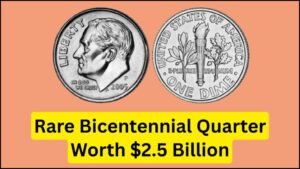Imagine fishing a penny out of your pocket and discovering it’s worth more than a private island or a fleet of supercars. Sounds like a daydream, right? But in the wild world of coin collecting, a legendary Lincoln Wheat Penny, rumored to be valued at an eye-popping $159 million, might just be hiding in plain sight—maybe even in your loose change! This isn’t just a coin; it’s a piece of American history wrapped in mystery, rarity, and a dash of wartime intrigue. Let’s dive into the thrilling tale of this numismatic holy grail and why it’s got collectors and casual penny-pinchers alike buzzing with excitement.
The Birth of the Lincoln Wheat Penny
A Coin That Changed History
In 1909, the United States Mint unveiled the Lincoln Wheat Penny to celebrate Abraham Lincoln’s 100th birthday. This wasn’t just another coin—it was a game-changer. For the first time, a real historical figure, not some symbolic Lady Liberty, graced a U.S. coin. Designed by sculptor Victor David Brenner, the penny featured Lincoln’s iconic profile on the front (obverse) and two wheat stalks framing “ONE CENT” on the back (reverse), symbolizing America’s agricultural prosperity. Minted until 1958, when the Lincoln Memorial design took over, billions of these pennies flooded into circulation, becoming a staple of American pockets.
Why So Special?
So, what makes one of these pennies worth $159 million? It’s all about a perfect storm of rarity, history, and a sprinkle of minting magic. The legendary coin in question is believed to be a one-of-a-kind specimen, reportedly struck on a bronze planchet instead of the standard copper-zinc alloy. Add to that its flawless, uncirculated condition—looking as pristine as the day it left the mint—and whispers of a secret minting experiment or an error that slipped past quality control. This combo creates a coin so rare it’s practically mythical.
The Wartime Error That Sparked a Legend
The 1943 Copper Penny Connection
The $159 million valuation often ties back to the fabled 1943 copper penny. During World War II, copper was critical for military supplies, so the U.S. Mint switched to zinc-coated steel for pennies in 1943. But a few copper planchets from 1942 got stuck in the presses, resulting in a handful of copper pennies stamped with the 1943 date—a minting mistake that’s now the stuff of legend. Only about 10-15 authentic 1943 copper pennies are known to exist, with some fetching over $1 million at auction. Could the $159 million penny be an ultra-rare variant of this error? The mystery fuels the hype
Other Valuable Wheat Pennies
While the $159 million penny is the ultimate prize, other Lincoln Wheat Pennies can still make your jaw drop. The 1909-S VDB penny, with only 484,000 minted in San Francisco and the designer’s initials, can fetch up to $100,000. The 1955 Double Die penny, with its noticeable doubled lettering, is another collector’s gem, worth thousands. These coins remind us that treasure doesn’t always scream “look at me”—sometimes it’s just a penny with a story.
How to Spot a Valuable Wheat Penny
Key Features to Check
Ready to play coin detective? Here’s how to spot a potentially valuable Lincoln Wheat Penny:
- Date: Focus on key years like 1909, 1914, 1922, 1943, and 1955.
- Mint Mark: Look for an “S” (San Francisco) or “D” (Denver) below the date—Philadelphia coins have no mark.
- Magnet Test: For 1943 pennies, steel sticks to a magnet; copper doesn’t.
- Weight: Copper pennies weigh ~3.11 grams; steel ones are lighter at ~2.7 grams.
- Condition: Sharp details and no wear boost value. Never clean a coin—it can ruin its worth
| Key Date | Mint Mark | Potential Value | Notable Feature |
|---|---|---|---|
| 1909-S VDB | S | Up to $100,000 | Designer’s initials |
| 1943 Copper | D/S | Over $1 million | Wartime error |
| 1955 Double Die | None | Thousands | Doubled lettering |
Why It Might Still Be Out There
The craziest part? This $159 million penny could still be circulating. Wheat pennies blend in with regular change, and most people don’t inspect their coins closely. Some end up in jars, attics, or inherited collections, waiting to be rediscovered. Stories like a 2019 Massachusetts teen finding a 1943 copper penny worth over $200,000 keep the dream alive. Every penny you get in change could be a ticket to a fortune
Conclusion: The Thrill of the Hunt
The legend of the $159 million Lincoln Wheat Penny turns every handful of change into a potential adventure. While the valuation might be more hype than reality—no penny has publicly sold for that much—the possibility of finding a rare coin keeps collectors and dreamers hooked. From wartime errors to minting mysteries, these pennies are tiny time capsules of American history. So, next time you get a penny in change, give it a second glance. You might not find $159 million, but you could uncover a piece of history worth far more than one cent.
FAQ: Your Lincoln Wheat Penny Questions Answered
What makes the $159 million penny so valuable?
It’s believed to be a unique bronze-planchet error coin in perfect condition, possibly from a secret mint experiment.
How can I tell if I have a 1943 copper penny?
Check the date, use a magnet (copper won’t stick), and weigh it (~3.11 grams). Get it authenticated by pros like PCGS or NGC.
Are all Lincoln Wheat Pennies valuable?
Most are worth a few cents, but rare ones like the 1909-S VDB or 1943 copper can fetch thousands or more.
Where can I get my penny appraised?
Contact reputable grading services like PCGS or NGC for professional authentication and valuation.
Disclaimer: The $159 million valuation is speculative and not based on verified sales. Always consult numismatic experts for accurate appraisals.




